New Study Conclusively Confirms Unprecedented Ice Melt In Greenland And Antarctica

While the global power structure and the climate engineers throw everything they have at the effort of hiding the climate meltdown, reality is becoming impossible to cover up. Many have been very confused about the true state of the climate, even many in the anti-geoengineering community. Data falsification, massive geoengineeering assaults, and manipulated media spin are the cause of the confusion. The reality of what is unfolding around us all is coming to light. The reality of geoengineering and the global cataclysm it has helped to fuel will soon enough be impossible to hide.
Dane Wigington
geoengineeringwatch.org
Press Release: Highs and lows: height changes in the ice sheets mapped
Source: European Geosciences Union

New digital elevation models for Greenland and Antarctica (Credit: Helm et al., The Cryosphere, 2014)
Researchers from the Alfred Wegener Institute in Germany have used satellite data to map elevation and elevation changes in both Greenland and Antarctica. The new maps are the most complete published to date, from a single satellite mission. They also show the ice sheets are losing volume at an unprecedented rate of about 500 cubic kilometres per year. The results are published today in The Cryosphere, an open access journal of the European Geosciences Union (EGU).
“The new elevation maps are snapshots of the current state of the ice sheets,” says lead-author Veit Helm of the Alfred Wegener Institute, Helmholtz Centre for Polar and Marine Research (AWI), in Bremerhaven, Germany. The snapshots are very accurate, to just a few metres in height, and cover close to 16 million km2 of the area of the ice sheets. “This is 500,000 square kilometres more than any previous elevation model from altimetry – about the size of Spain.”
Satellite altimetry missions measure height by bouncing radar or laser pulses off the surface of the ice sheets and surrounding water. The team derived the maps, which show how height differs across each of the ice sheets, using just over a year’s worth of data collected in 2012 by the altimeter on board the European Space Agency satellite CryoSat-2. These ‘digital elevation models’ incorporate a total of 7.5 million elevation measurements for Greenland and 61 million for Antarctica.
In addition to showing the highs and lows of the ice sheets at present, the study also highlights how the elevation has changed over the 2011–2014 period. Ice sheets gain mass through snowfall and lose it due to melting and accelerating glaciers, which carry ice from the interior of the ice sheet to the ocean. The researchers say it’s important to understand how ice thickness across Greenland and Antarctica has changed to model ice movements, and find out just how much ice sheets contribute to sea level rise.
The team derived the elevation change maps using a staggering 200 million data points for Antarctica and 14.3 million for Greenland collected by CryoSat-2 over the three-year period. The maps published in The Cryosphere reveal that Greenland alone is reducing in volume by about 375 cubic kilometres per year. The two ice sheets combined are thinning at a rate of 500 cubic kilometres per year, the highest rate observed since altimetry satellite records began about 20 years ago. The researchers say the ice-sheets annual contribution to sea level rise doubled since 2009.
“Since 2009, the volume loss in Greenland has increased by a factor of about 2, and in the West Antarctic Ice Sheet by a factor of 3,” says AWI glaciologist Angelika Humbert, another of the study’s authors. Both the West Antarctic Ice Sheet and the Antarctic Peninsula, on the far west of the continent, are rapidly losing volume. By contrast, East Antarctica is gaining volume, though at a moderate rate that doesn’t compensate the losses on the other side of the continent.
The areas where the researchers detected the largest elevation changes were Jakobshavn Isbrae (Jakobshavn Glacier) in Greenland – recently found to be moving ice into the ocean faster than any other ice-sheet glacier – and Pine Island Glacier (PIG) in Antarctica. The new study confirms that PIG, like other glaciers in the West Antarctic, has been thinning rapidly in recent years.
The researchers highlight the role of CryoSat-2 and its radar altimeter (also known as SIRAL) in producing the height maps, particularly in regions where the surface slopes steeply and elevation changes are more pronounced. “These areas can be difficult to measure, but SIRAL enabled us to continuously observe the surface of the ice sheets with high precision and dense coverage, better than any previous system,” says Helm.
Source: European Geosciences Union















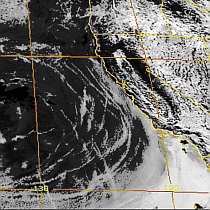













































































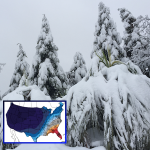




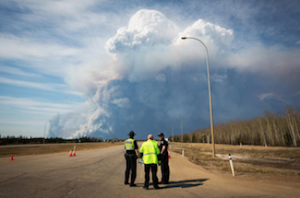









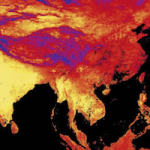
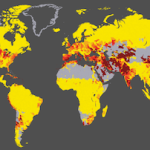










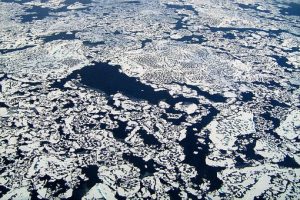















So the incident during our winter 2013-2014, and Antarctica’s summer, when the global warming researchers’ boat was stuck in massive ice in Antarctica for over a month – was geoengineered to fool the world (and the researchers on the boat)? Or was it fabricated entirely and no one at all was caught in the ice? Can anything in the media be trusted?